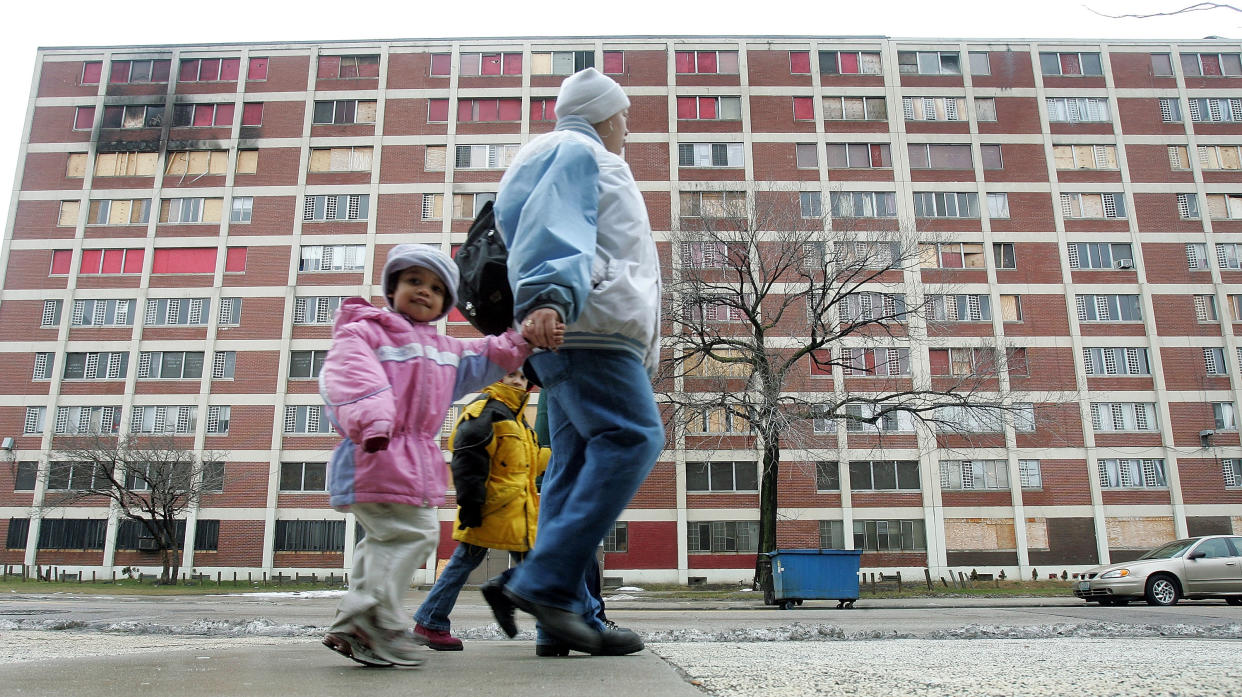6 alarming facts about poverty in America that you might not realize are true
Everyone knows that poverty exists, but by the very nature of economic inequality in America, if you’re not living in poverty or close to it, it’s not something you have to face on a daily basis. Wealthy people, or anyone living above the poverty line, can go through most of of their lives without facing the realities of being poor. This, sadly, only perpetuates the problem. But there are a ton of stats and facts about poverty in America that might alarm you.
Every year, the U.S. Census Bureau releases a report in September about the state of poverty in America.
In 2016, the numbers were pretty much the same as they have been in recent years, which means things aren’t exactly getting better.
According to the U.S. Census Bureau, there were 40.6 million people living in poverty in 2016, which is 2.5 million fewer than in 2015 and 6 million fewer than in 2014, so that’s sort of a good thing. Overall, the official poverty rate in 2016 was 12.7 percent of the entire U.S. population, which means that family of two adults and two kids is subsisting on just $24,000 a year. That’s about half of the national median income for men and women working full time, $ 51,640 and $41,554, respectively, which is also pretty much unchanged since the 2015 report. But that varies state to state and county to county.
Far too many people are just getting by and it affects so many surprising aspects of a person’s life.
Here are just a few insane facts about poverty in America that you should totally feel free to share at the Thanksgiving table this year.
1. There is basically no American Dream anymore.
So, 12 percent might not seem like that much, right? But remember: That’s only families living at or below the poverty line mark. It doesn’t include those living dangerously close to poverty. According to CNN Money, half of those living below the poverty line are actually making less than $16,000 a year, while the top 1 percent make $1.3 million a year.
How can poor people ever catch up? According to the Equal Opportunity Project, “Children’s prospects of achieving the ‘American Dream’ of earning more than their parents have fallen from 90 percent to 50 percent over the past half century.” So “upward mobility” is really not a thing that happens very often anymore.
2. You don’t have to live in poverty to go hungry.
According to Feeding America, there are 41 million households in the U.S. that suffer from food insecurity and 13 million of those have children in them. But get this: According to the USDA, 26 percent of those food insecure households are just above the poverty threshold and so make too much money to qualify for food benefit programs, which means kids are going hungry at school or otherwise.
3. The race gap is also huge.
This is infuriating, albeit not very surprising. In 2015, 24 percent of Black people in America were living in poverty and Hispanic people had a poverty rate of 21 percent; 11 percent of Asians were living in poverty. The lowest? White people, at 9 percent. So the next time someone questions whether the system favors certain racial groups, you can assure them that it does.
4. The cycle of poverty is real.
It’s hard to move up economically. According to DoSomething.org, children living in poverty are 1.3 times more likely to have learning disabilities or developmental delays, which means they aren’t as prepared for primary school as those kids who aren’t. They have higher rates of absenteeism or just drop out altogether. By 4th grade, students from low-income households are already an average of 2 years behind a grade level.
High school kids living in poverty or low-income households are seven times more likely to drop out of school than those coming from higher-income households. Children who grow up in poverty are also more likely to have children when they’re still teenagers or be incarcerated. Poverty can literally run in the family.
5. Women are more likely to live in poverty, too.
According to Poverty USA, 24 million women were living in poverty compared to 19 million men — and a lot of those women are mothers. Not all single parent households are impoverished, but 90 percent of them are led by women who are already at a loss. “The median annual income for female-headed households with children under six years old is roughly one-fourth that of two-parent families,” according to research out of Ohio State University.
The gender wage gap and inadequate assistance programs, such as subsidized child care, all keep some single moms and their kids living in poverty.
6. Other countries are way better at taking care of their poor.
According to the Organization for Economic Cooperation and Development, kids in the U.S. experience higher poverty rates than other developed countries. Mexico, Greece, Israel, and Turkey are the only countries with higher child poverty rates. In addition to that, 40 percent of American children will live in poverty for at least one year before they turn 18 years old.
The best way to put an end to poverty? Increase the kinds of assistance we give to lower income families, especially those helmed by single mothers. If we allowed those moms some ease when it comes to work and made it easy to feed their children, those kids could do better in school, and maybe break the cycle. But first, we all have to be appalled enough at the poverty stats to demand a fundamental change in how wealth is distributed in this country.

